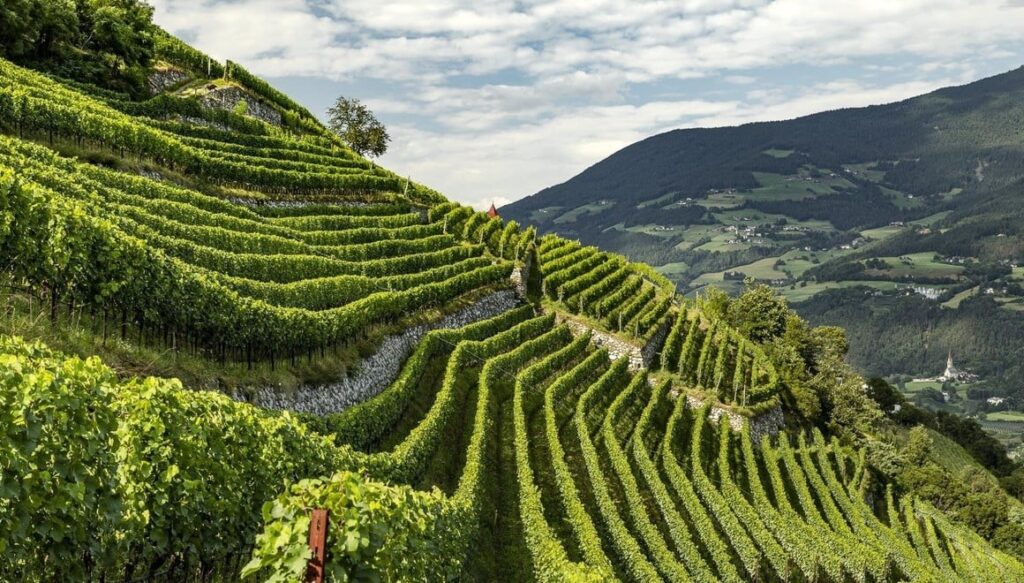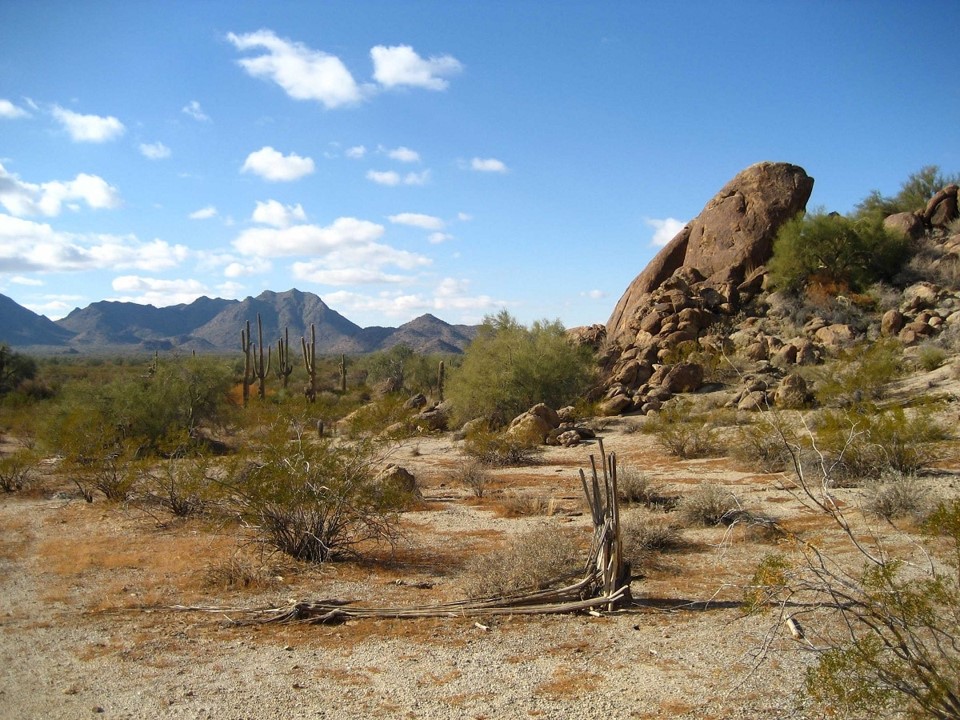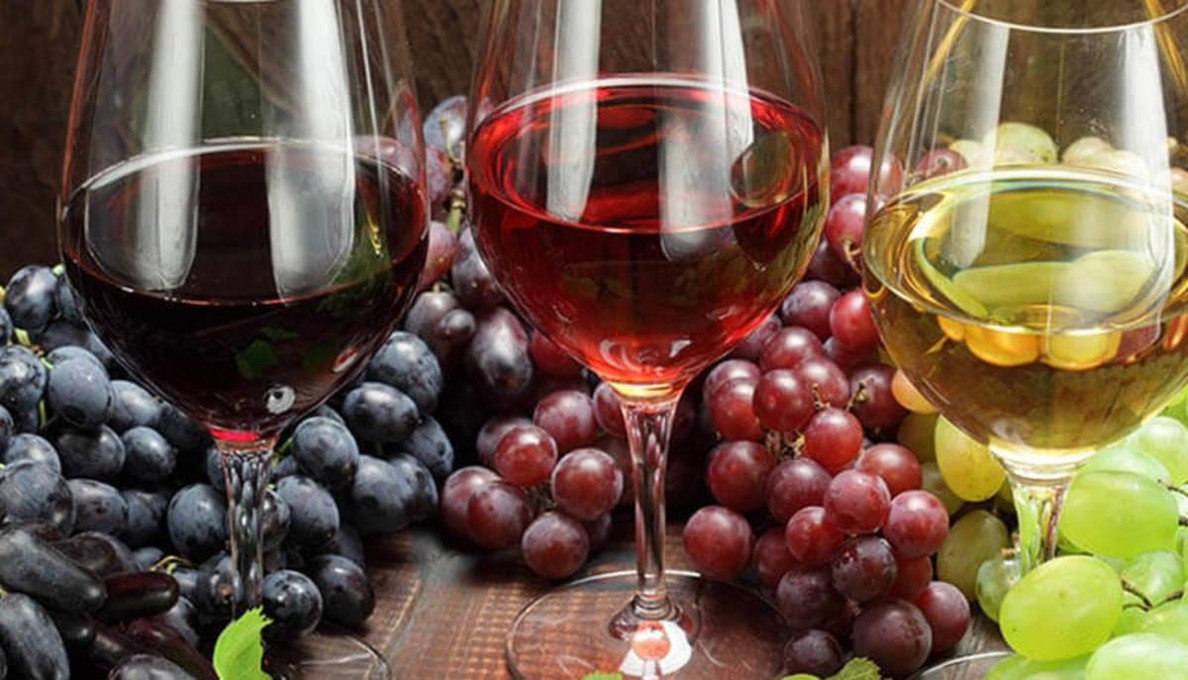
Writing about wine is an arduous task. Hundreds of books exist in all languages regarding its history, development, and the climatic indications that can be gleaned from the discovery of paintings, writings, and objects related to winemaking throughout the various millennia of human history. And it is for this reason that we will divide this topic into three distinct…interconnected articles.
If all foods are influenced by weather and climate, grapes, but above all their product, wine, are particularly sensitive to variations in meteorological and climatic parameters, affecting their production, sugar content, and, consequently, their quality. Wine is an alcoholic beverage obtained from the fermentation of grape juice. 1 It is a complex drink, whose composition varies depending on the type of grape, the fermentation process, and the winemaking techniques used. 2 Wine is mainly composed of water, ethyl alcohol, sugars, organic acids, nitrogenous substances, phenolic compounds, mineral substances, and aromatic compounds.
Wine Composition:
- Water: The main component, between 70 and 90%.
- Ethyl alcohol (ethanol): The alcohol that gives wine its strength, between 6 and 16%.
- Sugars: Residual glucose and fructose, in variable quantities, between 0 and 25%.
- Organic acids: Tartaric, citric, malic, lactic acids, which contribute to the wine’s acidity.
- Phenolic compounds (polyphenols): Responsible for the color, astringency, and beneficial properties of red wines.
- Mineral substances: Traces of mineral salts, which influence the taste and aroma.
- Aromatic compounds: Many compounds that give wine its characteristic bouquet.
WINE AND CLIMATE
Wine allows us to understand the climate of the past. An interesting international study analyzed records of grape harvests dating back to the Middle Ages and discovered they are a reliable indicator. In fact, harvest records dating back to the 1400s have been found in cellars and monasteries and can therefore represent a wealth of valuable information. From the Middle Ages onwards, local authorities set the opening day of the harvest on a specific date. Therefore, this date also provided indications about the temperature of the time, similar to the sweetness of the must before fermentation. After crushing, local experts tasted the must and assessed the sugar content on a scale of one to five. It is known that high temperatures increase the sugar content of grapes: therefore, in warmer years, wines had a higher sugar level. The study group began research in archives, comparing sugar assessment levels with important historical events such as wars, famines, and epidemics that may have influenced the harvest. The study revealed that, for example, in 1470, the must had the highest score, a sign of high temperatures (which was then followed by a cold period known as the Little Ice Age). However, the temperature variations capable of influencing wine production were very diverse. Another recent study highlighted three consecutive years of poor production due to a volcanic eruption that had cooled the climate in Europe and affected wine production in the Moselle Valley. Tree rings had not recorded this phenomenon as clearly. Since the late 1980s, temperatures in Europe have generally started to rise, as have the assessments of sugar content. So far, global warming has been positive for European wines, but what can we expect in the future? Droughts and excessive heatwaves could even destroy vineyards, especially in Southern Europe. Therefore, it is wise not to underestimate the effects, even negative ones, of climate change on wine. If this trend of rising temperatures continues, winegrowers will be forced to select more heat and drought-resistant vine varieties, as well as modify pruning, cultivation, and irrigation techniques. The data on rainfall, which has become more irregular, is also alarming. Since 1980, 70% of the vintages have recorded below-average rainfall levels, with some seasons seeing reductions of up to 40-60%. Some traditional varieties may no longer be suitable for the new climatic conditions, while others may thrive in a warmer and drier climate. Global warming is also pushing winegrowers to explore new regions for grape cultivation. Some areas that were previously too cold for viticulture are becoming more suitable, while others traditionally renowned for producing high-quality wine may become too hot. But this had already occurred during the so-called “climatic optimum” (800-1300 AD). Climate therefore plays an essential role in viticulture. The grapevine is a plant that adapts well to different types of climate, but it requires a range of minimum temperatures for its vital functions: for example, 16 to 20°C for flowering and budding, and 18°C to 24°C for ripening. Air and soil temperature and the sun exposure of the vineyards, as well as the duration of sunshine, have a great influence on the development of the vine, like all plants in general. If temperatures fall outside a certain range of values, vine cultivation is no longer possible. Cold damage begins to occur at -15°C, but the vine can also withstand -20°C in the middle of winter, provided the frost does not last too long. Regarding heat, the vine can even resist temperatures from 38°C to 50°C, depending on various environmental situations. Humidity, and therefore water, is another fundamental climatic factor for vine cultivation. Thanks to its very developed root system, capable of reaching great depths, the vine is among the plants most resistant to drought. An annual threshold can be around 250 mm, provided the rainfall is well distributed. Snow does not create any problems, unless it is accompanied by excessive drops in temperature. As with all fruit plants, the great enemy of the vine is hail, which can cause more or less serious damage to the harvest, depending on the vegetative stage affected. Regarding altitude, the vine can generally be cultivated up to 700-750 meters, although in some Alpine areas it can also be found up to a thousand meters above sea level. Depending on the latitude, there can also be much more extreme situations; for example, on the slopes of Mount Etna in Sicily, the vine reaches 1300 meters, and in the Bekaa Valley in Lebanon, 1500 meters. Generally, however, the vine finds its best habitat on hills, where it produces the best quality grapes. Flatlands can also give good results, provided the area is not subject to excessive humidity, fog, late frosts, and flooding. The exposure of vineyards to the sun is fundamental, and its importance becomes critical the closer one gets to the latitudinal limits for vine cultivation. North-facing exposure can be useful in warm climate zones to give the grapes a higher acid content and avoid the risks of overripening (late harvest on the vine involves leaving the grapes to over-ripen directly on the vine. This process is called surmaturazione: normal harvesting is not carried out, but the harvest is delayed by up to a month). Lastly, winds also play an important role. Light breezes facilitate soil transpiration and promote pollination, but strong winds can cause damage similar to that of hail, breaking shoots. Hot winds, in vineyards located in the southernmost cultivation belt, can increase water evaporation from the soil, causing or increasing drought. Marine winds, with their salt content, can damage leaves, shoots, and bunches. Let’s see how different types of climate influence viticulture.
Hot Climate

Warm climate is not an obstacle to viticulture, unless the heat, understood as the average annual temperature, is excessive. The grapevine is a plant that prefers temperate climates, with average annual temperatures no lower than 10°C and no higher than 25°C. In itself, heat is not a hindering factor for vine cultivation, provided it is not excessive. The latitudinal bands within which the vine can be cultivated (30-50° N and S, respectively) reflect this requirement.
Cool Climate

The grapevine prefers cool climates for its growth, which are fundamental in viticulture. The latitudinal range within which it can be cultivated (30-50° S/N depending on the hemisphere) extends roughly from North Africa to the north of France. Within this range of latitudes, different grape varieties show varying sensitivity to climate, so some are more suitable than others for cultivation in cooler environments.
Continental Climate

Wine regions with a continental climate are characterized by distinct climatic variations that occur during the grape berry growth period and by very significant summer-winter temperature ranges, with hot summers and cold winters, perhaps with snow. Regions with this type of climate are often located inland and far from significant bodies of water, such as large lakes or seas, that could act as moderators of climatic extremes. Often, during the growing season, significant day-night temperature variations occur in continental climates. In winter, but also in spring, frost and hail can be a danger to viticulture. These climatic influences are the basis of the great variation in the quality of wines from individual vintages that is often typical of continental climates, as in the case of Burgundy, for example. Wine regions with a continental climate are more prevalent in the Northern Hemisphere than in the Southern Hemisphere. The most important wine regions with a continental climate are:
- In France Burgundy, the north of the Rhone (Côte-Rôtie) and Loire
- In Spain the Rioja area
- In Italy Piemonte and Veneto
- Austria, Czech Republic, la Slovakia, Hungary, Romania, Russia, Serbia, internal areas of Bulgaria
- the inland of Turkiye
- most of Canada’s wine regions
- Texas, but just the High Hills area
- the area of Mendoza in Argentina
Maritime Climate

Wine regions with a maritime climate generally face large bodies of water (such as oceans, estuaries, and inland seas) that act as a moderator for their seasonal temperatures. The maritime climate shares many characteristics with both the Mediterranean and continental climates and is often considered an intermediate between these two extremes. Like the Mediterranean climate, the maritime climate also has rather long intermediate seasons, thanks to sea currents that moderate the region’s temperatures. However, while the Mediterranean climate is usually very dry during the summer season, viticulture in a maritime climate is often subject to the danger of excessive rain and humidity, which can cause various vine diseases, such as fungi and molds. Like the continental climate, the maritime climate also has marked seasonal changes, but they are usually not as drastic, with warm, rather than scorching, summers and cool, rather than cold, winters. The most important wine-growing regions with a maritime climate are:
- In France, Bordeaux and the Loire Valley area closest to the ocean (Bordeaux’s temperate maritime climate, influenced by the Atlantic Ocean and the Gulf Stream, is fundamental for the production of its renowned red wines based on Cabernet Sauvignon and Merlot, as well as its dry and sweet white wines. Mild summers and not excessively harsh winters, together with well-distributed rainfall, contribute to a gradual ripening of the grapes; The western part of the Loire Valley benefits from the Atlantic influence, which brings mild winters and cool, humid summers. This climate is ideal for the production of fresh and aromatic white wines based on Sauvignon Blanc)
- In the USA, in Oregon, the Willamette AVA (this region enjoys a cool and humid maritime climate, perfect for the cultivation of high-quality Pinot Noir, famous for its elegance and complexity. Other varieties such as Pinot Gris and Chardonnay also thrive in this environment) and the Long Island AVA, New York State (This peninsula extending into the Atlantic Ocean benefits from a moderate maritime climate, with warm summers and mild winters. A variety of wines are produced here, including Merlot, Cabernet Franc, Chardonnay, and Sauvignon Blanc)
- In Spain, the Rías Baixas area, in Galicia (Facing the Atlantic Ocean in Galicia, this region is known for its cool and rainy maritime climate, ideal for the cultivation of Albariño, an aromatic white grape variety with a pronounced acidity)
- New Zealand (The entire country is strongly influenced by a maritime climate, with variations depending on latitude and orography. Regions such as Marlborough (Sauvignon Blanc), Central Otago (Pinot Noir), and Hawke’s Bay (Merlot and Syrah) show how the maritime climate can yield excellent results with different grape varieties)
- Southern Chile (The southern wine regions of Chile, such as the Casablanca Valley and the San Antonio Valley, are influenced by the Pacific Ocean, with mild summers and cool winters. This climate favors the production of fresh and aromatic white wines such as Sauvignon Blanc and Chardonnay, and some elegant red wines such as Pinot Noir)
Dry Climate

Dry climate does not in itself represent an obstacle to viticulture. The grapevine’s sensitivity to excessive water is certainly higher than its sensitivity to drought. To give its best in terms of fruit quality and concentration, the vine needs a certain degree of water stress, which in the most extreme cases can be alleviated by so-called ‘rescue irrigation’. On the other hand, high-rainfall areas are less suitable for the production of quality grapes, since the dilution of water present in the soil leads to the dilution of the juices contained in the berries.
Windy Climate

The grapevine prefers cool and breezy climates, important characteristics in viticulture. The latitudinal range for vine cultivation is from 30 to 50° (N or S depending on the hemisphere). Breezes naturally tend to cool the soil, but above all, they prevent the stagnation of humidity that could lead to the formation of molds and other parasites, which are aggressive to the fruits and the foliage of the plants.


Leave a Reply